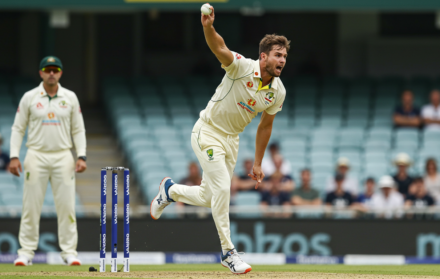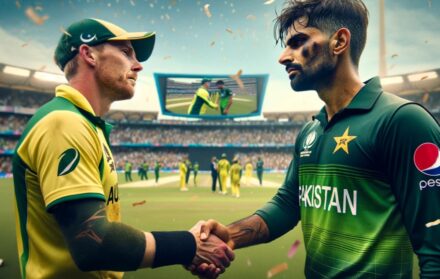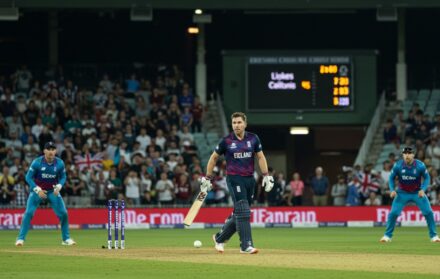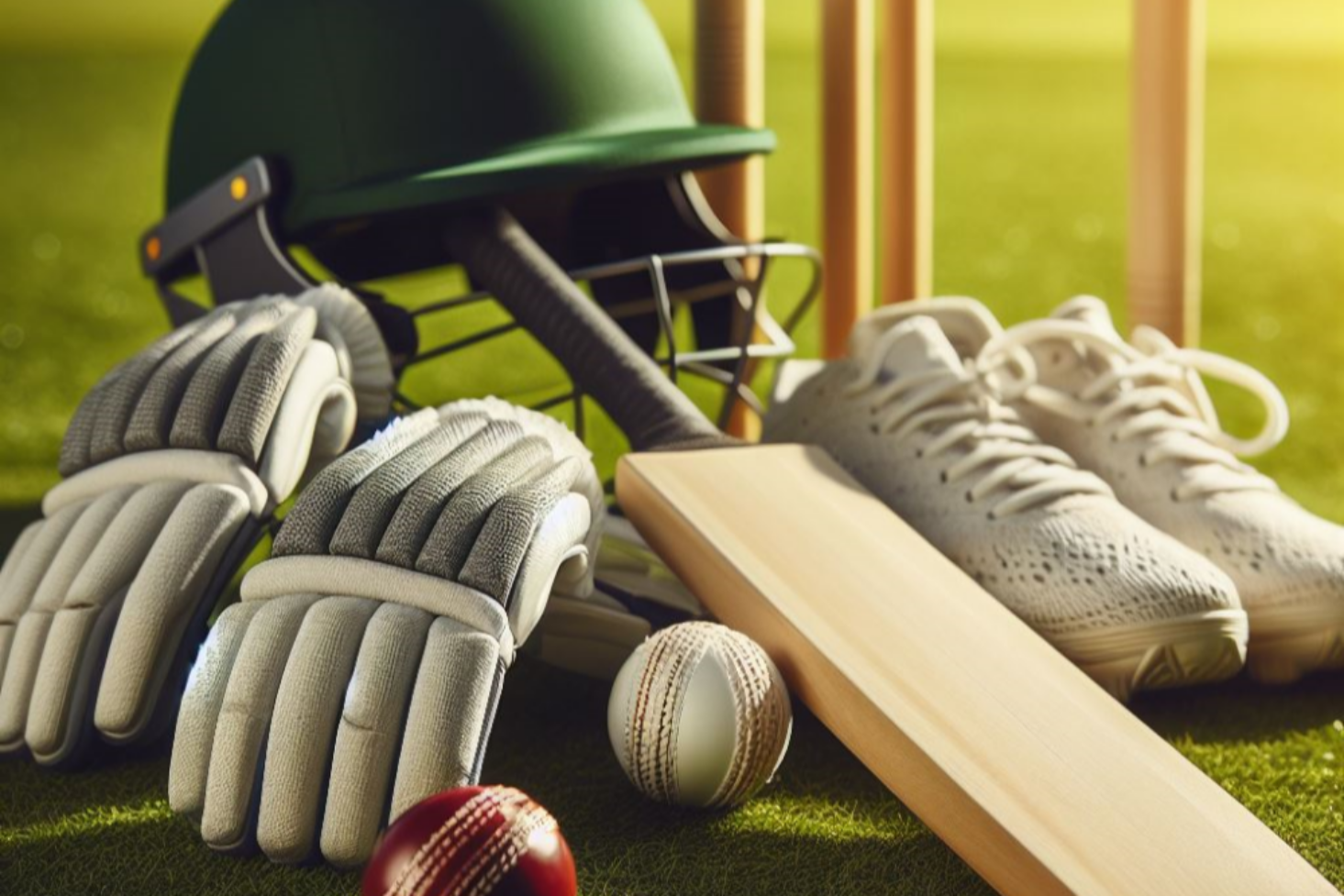
The Best Cricket Accessories Every Player Needs
In the realm of cricket, where every match is a dance between skill and strategy, the right accessories can make a profound difference in a player’s performance. As cricketers step onto the field, equipped with precision and passion, the importance of having the best cricket accessories becomes evident.
This guide navigates through the essentials cricket accessories every player needs, delving into the gear that every player needs to enhance their game.
At the core of a cricketer’s arsenal is the cricket bat, a sacred extension of the player’s skill and style. The nuances of a well-crafted bat, from its weight distribution to the curvature of its blade, play a crucial role in determining the outcome of every shot.
Uncover the secrets of selecting the perfect bat that resonates with your playing style, ensuring a powerful and controlled performance.
Protection is paramount in cricket, and the right set of pads and gloves serve as the frontline defense against fast deliveries and tricky bouncers. This guide unravels the intricacies of choosing protective gear that strikes the delicate balance between safety and flexibility.
From lightweight gloves that offer a responsive grip to pads that shield the legs without compromising agility, discover the key to a well-protected yet agile stance on the pitch.
For cricketers who thrive in the heat of the game, the right clothing is more than just a uniform – it’s a performance-enhancing asset.
Explore the world of cricket apparel that combines comfort, moisture-wicking technology, and durability. Whether it’s the breathable fabric of a cricket jersey or the adaptive design of cricket trousers, each element contributes to the player’s ease of movement and focus during the match.
The cricket ball, a sphere of leather and cork, is the protagonist in every duel between bat and ball. This guide explores the characteristics of the best cricket balls, from the intricacies of seam and swing to the resilience of the core.
Understanding the nuances of different cricket balls allows players to adapt their techniques and tactics, gaining an edge in various playing conditions.
In the dynamic realm of cricket accessories, the right footwear is a silent ally that provides stability, traction, and comfort. From the right pair of cricket spikes for the bowler’s approach to the snug fit of cricket shoes for the batsman’s nimble footwork, delve into the world of cricket footwear that complements the demands of the game.
Amidst the diverse landscape of cricket accessories, this guide serves as a compass, navigating players through the intricacies of gear selection. As cricketers prepare to step onto the field, armed with the best cricket accessories, let this guide be a companion in the pursuit of excellence, empowering every player to bring their A-game to the pitch.
In the spirit of elevating your cricket experience, consider exploring Sixes Social Cricket—a platform that not only provides essential gear insights but also fosters a vibrant community where players can share tips, engage in discussions, and connect over their shared passion for the game.
So, as you gear up for your next cricketing adventure, let Sixes Social Cricket be your trusted ally, ensuring that you are well-equipped and connected in your journey toward cricketing excellence.
The Cricket Bat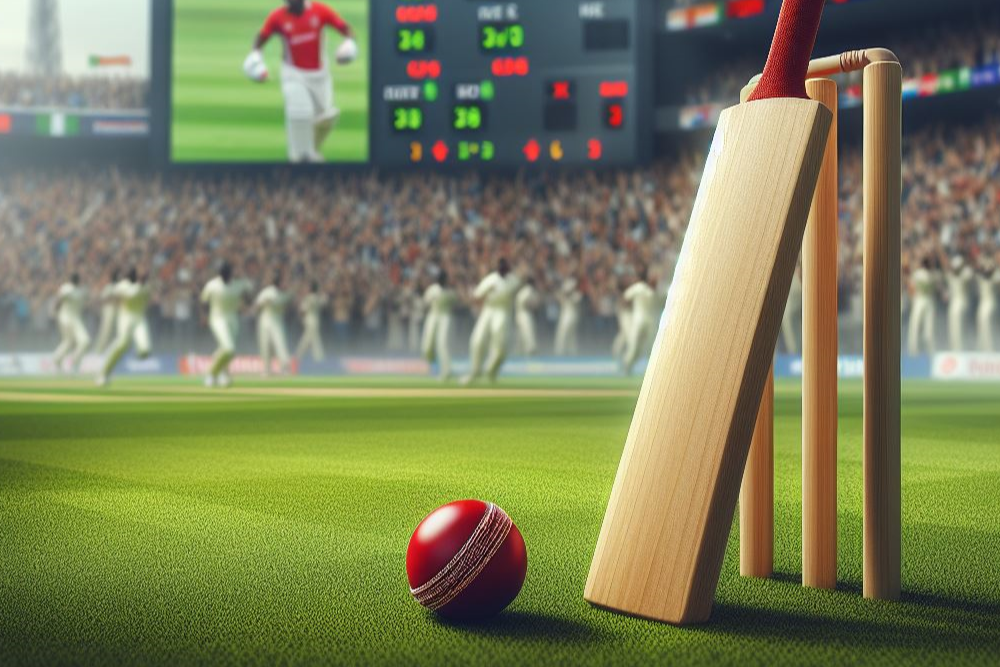
The cricket bat is an essential tool for every player. Choose the appropriate bat that fits your style and preferences. There are various factors to keep in mind when selecting a cricket bat:
- Size: Opt for a bat that offers a comfortable feel.
- Weight: Consider your strength and playing style while selecting the weight.
- Material: English willow and Kashmir willow are the available options for the bat’s wood.
- Grains: Look for a bat with 6-8 grains.
- Profile: The bat’s profile has an impact on its balance and sweet spot.
- Grip: Seek a comfortable and non-slip grip.
Carefully evaluate these factors and experiment with different bats before making your decision. The cricket bat is an important instrument that can significantly improve your performance.
The Cricket Ball
The cricket ball is an essential component of the game of cricket. It weighs between 156 and 163 grams and has a diameter of 224 to 229 millimeters. The circumference usually falls within the range of 229 to 235 millimeters.
The ball is made of leather, which ensures its durability and resilience during gameplay. Inside the ball, there is a core made of tightly wound string and cork. This design allows for optimal bounce and shape retention. The materials used for the core are carefully chosen to strike a balance between hardness and flexibility.
In traditional Test matches, red cricket balls are used as they provide better visibility against the green grass. On the other hand, white balls are used in limited-overs matches to improve the tracking of the ball’s movement. The cricket ball plays a crucial role in the game, affecting both batsmen and bowlers.
Its weight, size, and material significantly influence its behavior and trajectory. Proper care and maintenance are necessary to preserve the ball’s characteristics and functionality throughout a match.
Understanding the specifications of the cricket ball helps players make informed decisions when selecting and using the ball to optimize gameplay.
The Protective Gear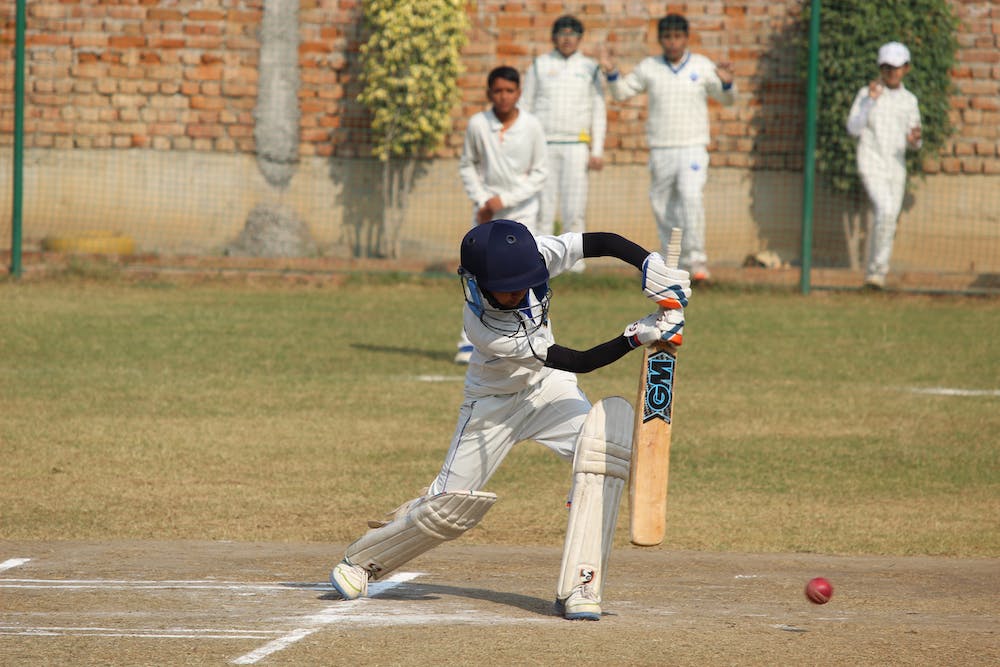
Cricket players understand the importance of wearing the appropriate protective gear to ensure their safety on the field. The necessary equipment includes the following:
1. Helmet: The helmet is crucial for guarding the head against the impact of the cricket ball, thus reducing the risk of injury.
2. Leg Guards: Also known as pads, these protective gears shield the lower legs, knees, and thighs from the swift deliveries of fast bowlers.
3. Gloves: The gloves not only provide protection for the hands but also ensure a secure grip on the bat, which is essential for both batsmen and wicketkeepers.
4. Chest Guard: This protective gear safeguards the chest and abdomen, protecting vital organs from harm.
5. Abdominal Guard: Designed to protect the groin area, the abdominal guard minimizes the risk of injury from the ball’s impact.
6. Arm Guard: Offering protection to the forearm and elbow, the arm guard allows for flexibility and unhindered movement.
7. Thigh Guard: This gear covers the upper leg area, providing additional protection against fast deliveries.
8. Ankle Guard: Common injuries in cricket often involve twists and sprains in the ankles. The ankle guard offers vital support and protection against such injuries.
I remember a friend who decided not to wear a helmet during a friendly cricket match. Despite his experience and feeling invincible, everything changed in an instant. While he was batting, a fast bowler delivered a bouncer that struck him on the head. The impact was severe, causing him to collapse.
Fortunately, the paramedics arrived promptly. Although he eventually recovered, he suffered a concussion and needed several weeks of rest. This incident clearly demonstrated the significance of wearing protective gear, especially a helmet, even in informal matches.
The Cricket Helmet
The evolution of the cricket helmet stands as a testament to the ever-growing commitment to player safety in the sport. In the early days of cricket, players took to the field without the protective shield of a helmet, exposing themselves to the inherent risks of head injuries.
The turning point in cricket helmet history came in 1977 when English cricketer Dennis Amiss made history by becoming the first player to don a helmet in a match. Amiss opted for a modified motorbike helmet, marking a revolutionary step in cricket safety.
The initial adoption of cricket helmets faced its fair share of skepticism, primarily due to their bulky and uncomfortable nature. Critics argued that the added weight hindered players’ agility and comfort on the field.
However, recognizing the paramount importance of player safety, manufacturers embarked on a journey of continuous innovation and improvement.
Advancements in materials and design have played a pivotal role in transforming cricket helmets into lightweight, protective gear that prioritizes both safety and comfort for players.
Modern cricket helmets are engineered with a focus on providing adequate ventilation, ensuring that players can maintain their focus and endurance throughout extended periods on the field.
The incorporation of high-quality materials has not only reduced the weight of the helmets but also enhanced their durability and impact resistance.
Manufacturers, cognizant of the dynamic nature of the sport and the evolving safety standards, engage in extensive research and development to stay at the forefront of helmet technology. The quest for perfection in cricket helmet design involves rigorous testing to ensure that the gear meets and exceeds necessary safety standards.
This commitment to excellence underscores the cricketing community’s dedication to mitigating the risks associated with head injuries.
The Cricket Gloves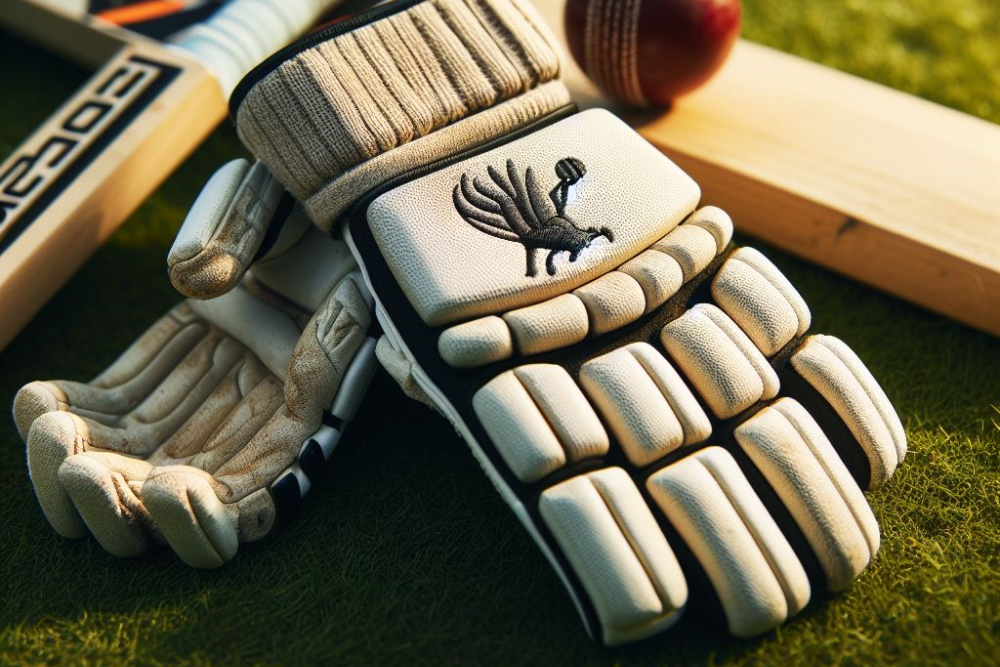
When delving into the realm of cricket gloves, the choices abound, and the selection process becomes a pivotal aspect of a cricketer’s gear considerations. The market is brimming with various brands and models, each catering to specific needs and preferences.
A discerning player must weigh factors such as brand reputation, budget constraints, and individual requirements to make an informed decision that complements their playing style.
Two stalwarts in the cricket gear arena, Gray-Nicolls and Kookaburra, have earned commendation for their high-quality leather gloves that go beyond mere protection—they actively contribute to improving batting performance.
These gloves, crafted with precision and expertise, offer the perfect blend of comfort and durability, ensuring that every shot played is executed with finesse and confidence.
For wicket-keepers, the choice of gloves extends beyond brand preferences, with Puma and SS standing out as reliable options. The availability of both synthetic and leather materials caters to the diverse needs of wicket-keepers, offering a secure grip and essential protection during crucial moments of catching or stumping.
These gloves, designed with the unique demands of the wicket-keeping role in mind, exemplify the intersection of functionality and performance.
Size becomes a crucial factor when selecting cricket gloves, as the right fit is paramount for maximum comfort and flexibility during gameplay. Ill-fitting gloves can impede a player’s ability to maneuver the bat effectively or execute precise movements while keeping wickets.
Additionally, attention should be given to the level of padding and protection provided by the gloves, serving as a preventive measure against potential hand injuries during shots or wicket-keeping maneuvers.
In the grand tapestry of cricket gear, the selection of the right gloves becomes a personalized journey, with each player weaving their story of confidence and skill enhancement.
As you navigate the vast array of options, always remember that the right cricket gloves are not just accessories—they are the linchpin that empowers you to excel in your role as a cricketer, providing the assurance and comfort needed to make your mark on the field.
The Cricket Pads
Cricket players require the correct equipment for safety and performance, and an essential accessory is the cricket pads. Cricket Pads protect the legs from injuries caused by fast-paced deliveries and hard-hitting shots.
Size: Choose cricket pads that fit correctly based on the player’s height. The cricket pads that are too small offer inadequate protection, while oversized cricket pads restrict movement.
Material: Cricket pads are made from high-density foam and durable synthetic materials. The foam provides cushioning against impact, while the outer shell of the cricket pads ensures durability and protection.
Straps: Good qualitycricket pads have adjustable straps for a customized fit and comfort. these straps keep the cricket pads securely in place during the game.
Knee and shin protection: Cricket pads should cover the entire length of the shin, down to the player’s shoe. Sufficient padding around the knee area of the cricket pads protects against injuries.
Weight: Prefer lighter cricket pads for freedom of movement on the field, without compromising protection.
When choosing cricket pads, prioritize comfort, fit, and protection. Invest in high-quality cricket pads that meet safety standards to ensure players can focus on their game without worrying about leg injuries.
The Cricket Shoes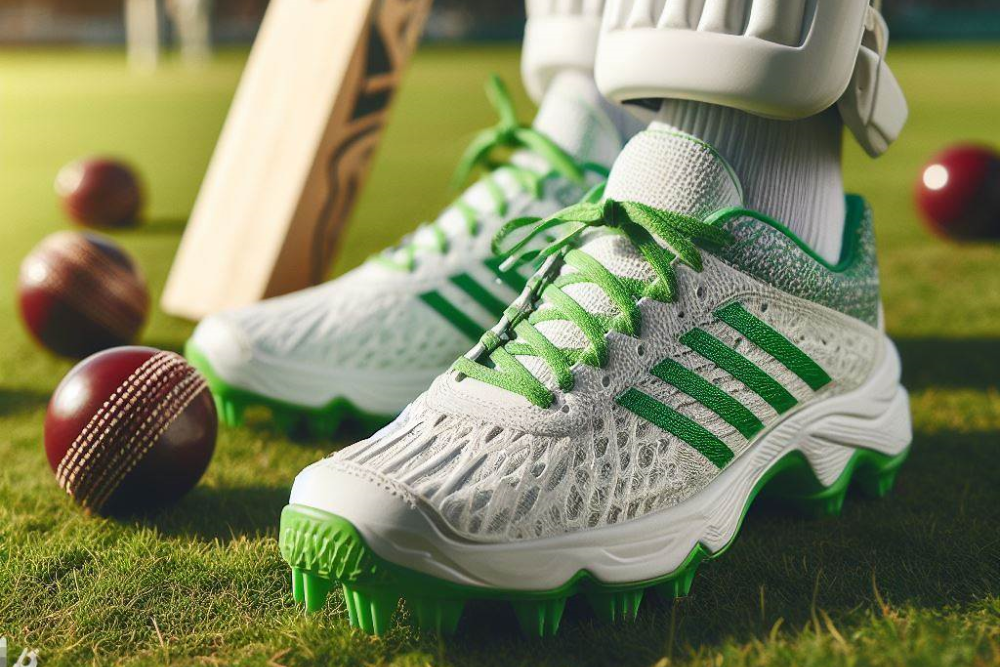
Cricket Shoes are essential for players as they provide stability, grip, and comfort on the field. When choosing cricket shoes, it is crucial to consider various factors. One of the most important factors is comfort.
It is necessary to find well-fitting shoes with sufficient cushioning to prevent any discomfort and minimize the risk of injury, especially during long hours of play. Reputable brands such as New Balance and Adidas are known for offering comfortable cricket shoes.
Another important factor to consider is grip. Good grip plays a vital role in enabling cricket players to firmly hold the ground and make swift movements. This is why it is recommended to choose shoes with rubber soles that are specifically designed for cricket pitches, as they provide optimal grip.
In addition to comfort and grip, support is also crucial for cricket shoes. Sufficient ankle support is essential to prevent sprains and to ensure stability during sudden movements or changes in direction.
Durability is another key consideration when selecting cricket shoes. It is advisable to choose shoes made with high-quality materials such as leather or synthetic materials that are known for their longevity. This ensures that the shoes will last longer and withstand the demands of rigorous cricket matches.
Lastly, breathability is an important factor to take into account. Opting for shoes with good ventilation helps keep the feet cool and prevents discomfort, especially during physically demanding cricket matches.
Considering all these factors ensures that you choose the best Cricket Shoes that provide comfort, support, grip, and durability, ultimately enhancing your performance on the field.
The Cricket Clothing
Clothing worn by cricket players is crucial for their performance and comfort on the field. Here are the key factors to consider:
Cricket Shirt: Cricket shirts are usually made of lightweight and breathable polyester fabric. This helps to remove sweat and keep the player cool during long matches. They should also have a comfortable fit and allow for easy movement.
Cricket Trousers: Cricket trousers are typically made of durable materials like polyester or a polyester-cotton blend. They should have a loose and relaxed fit to allow unrestricted movement while playing shots or fielding.
Cricket Jumper: A cricket jumper is essential to keep players warm, particularly in colder weather. It is usually made of wool or a synthetic blend and should have long sleeves and a V-neck design.
Cricket Hat: A wide-brimmed hat is recommended to provide sun protection during long matches. It should be lightweight and breathable.
Cricket Socks: Cricket socks should be long enough to reach just below the knee and made of moisture-wicking material to keep the feet dry and comfortable. They should also have cushioning in the sole for added comfort during long hours of play.
Cricket Shoes: Cricket shoes are specially designed with spikes or rubber studs to provide traction on the field. They should have a supportive fit and cushioning in the sole to absorb impact.
When choosing cricket clothing, consider the quality of the fabric, the fit, and the level of comfort and protection it offers. Finding the right cricket clothing can enhance a player’s performance and overall experience while playing the game.
The Cricket Bag
The cricket bag is an essential item for every cricket player. It serves the purpose of storing and organizing all the necessary equipment required on the field. When selecting a cricket bag, it is important to consider the following factors.
Size: The cricket bag should be spacious enough to accommodate all your gear, including the cricket bat, pads, gloves, helmet, and clothing. It is advisable to look for a bag with multiple compartments and pockets to ensure proper organization.
Durability: Opt for a cricket bag that is made from high-quality materials such as heavy-duty nylon or polyester. This ensures its ability to withstand regular use and different weather conditions.
Comfort: It is recommended to choose a Cricket Bag that has padded straps and handles for comfortable transportation. Adjustable straps allow for customization based on personal preferences.
Ventilation: It is beneficial to select a bag that is equipped with ventilation panels or mesh sections to prevent unpleasant odors and maintain the freshness of your gear.
Extra features: Consider additional features provided by the cricket bag, such as external pockets for personal items, specific sections for shoes, or a separate compartment for dirty clothes. These features enhance the functionality and convenience of the cricket bag.
Fact: The cricket bag not only serves the purpose of carrying and safeguarding equipment but also represents team spirit and identity through team colors and logos.
